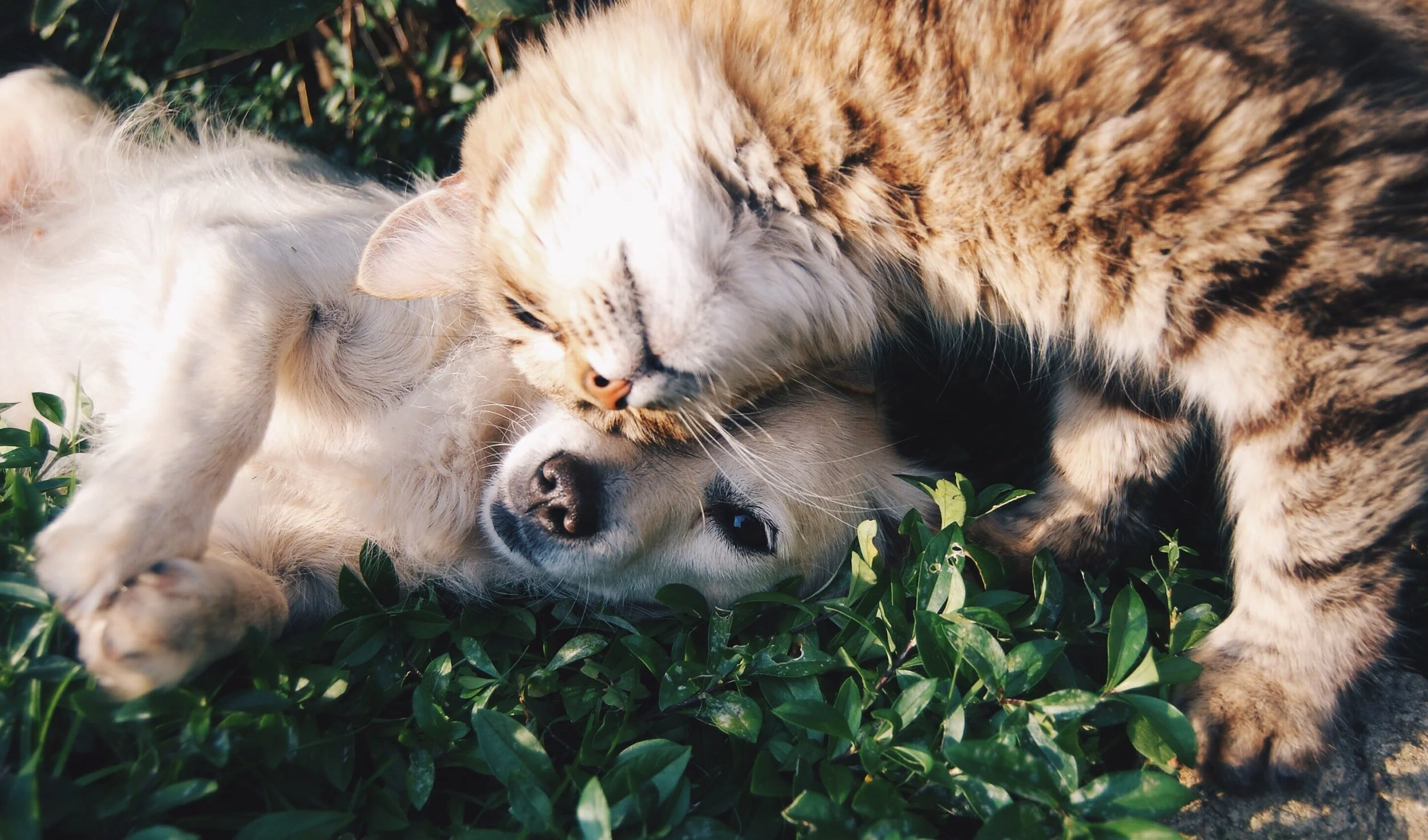Place is the answer to: if you DON’T like what I’m doing, what should I do instead? (Photo: pitbull puppy sitting on a thick dog bed)
Are you worried that you’ll accidentally teach your new puppy to panic when he’s left alone? Scared that he’ll spend his day pacing, drooling, whining, barking, and getting into the garbage bins? No one wants their puppy to be miserable when left alone, so why not take the steps to prevent this?
Crate training and placework are two amazing strategies to help your puppy learn to be calm and relaxed on his own.
Did you know that if your dog is always touching you, being touched by you, and allowed to follow you everywhere in your home that they can develop separation anxiety?
It’s very natural for dogs to follow a leader. It’s also very natural for dogs to always be with their pack. Packs don’t separate, so dogs don’t have a lot of knowledge of how to live with humans who come and go to work, school, and social events. It is our job to teach our dogs how to be comfortable and calm when left alone.
If your dog is always on your lap, being petted, chatted to, and allowed to follow you (even to the bathroom,) then don’t be surprised when they want to follow you every time you unlock a door, turn a doorknob, or open a door.
This is what’s natural to your dog. You must teach them how to feel well on their own when you go to work, school, or out to socialize with friends. (Photo: Wolves following their leader through the snow)
Add in a bunch of words that your dog doesn’t understand, like “It’s okay baby. Mommy’s only going to the mailbox,” or “Love you! See you soon! You’re the best doggie!” and there’s a good chance your dog will be even more anxious when you leave the house.
From your dog’s point of view: “She’s acting very strangely with that soft energy and now she’s going out into the big, bad world alone?!?! I don’t think so! She needs me to protect her. Let me try to follow her out the window, since she clearly forgot me here (by shutting the door in my face.)”
One of the easiest ways to teach your dog that you don’t need to be followed all over your house (and into the bathroom,) is to teach her the place command.
The place command is really cool because it’s actually communicating all of this in only one word:
-go over here
-lie down
-relax and be calm
-no one will bother you here, it’s a safe zone
-stay here until I direct you to leave
Isn’t that amazing?!
Not only will your dog love to hang out on her comfy cot, she’ll love how she feels — calmness is much more natural to dogs than being “on” all day (excited, overstimulated, no “off” switch.)
Now that she’s not allowed to follow you everywhere, she can learn that she doesn’t always need to be right behind you, on your lap, or being petted to be okay. That way, you can rest assured that she’s feeling well when you’re out getting groceries, going to a friend’s backyard for a bevvy, or going to work.
Calmness feels sooooo good (Photo: Golden Retriever relaxing on a dog bed)
It’s important that pet parents understand that just like any command, place needs to be worked on a few times a day, every day for a couple of weeks in order for your dog to be able to stay in place for any length of time. You don’t simply purchase an elevated dog bed, tell your dog “place,” and then expect to host a dinner party and have her lie there with all those distractions on day one.
Always build up duration, distance, and distractions slowly.
You’ll begin with very short sessions using a leash. You’ll gradually work toward being able to communicate to your dog that even if you set the leash down, they should remain in place. Then, you’ll work through being able to pick up the leash without your dog breaking place. Gradually you’ll be able to increase the distance (how far away you can move from the cot/your dog without your dog thinking she should follow you.) Gradually, you’ll add in distractions, like children running/dancing/playing with their toys; your partner vacuuming the stairs; or someone opening a bag of treats. It’s so important that you add these types of distractions gradually.
Dogs learn through repetition and if you always make it too hard and they fail over and over again, they won’t get the chance to learn what you actually want from them.
Just like you wouldn’t head to your first dance class tonight and be able to perform a two-minute dance routine after watching it only once, your dog needs time to learn all the steps.
Training takes time and your dog is worth it.
Will I still use my crate when I’m at work, though?
Absolutely. I wouldn’t expect any dog to lie on place all day while you’re at work or school. Use the place command to encourage calmness throughout the day when you’re at home.
You can also use place in your backyard while you’re having a bbq; when you’re relaxing at your campsite; or when you’d like your dogs to stop wrestling and have some downtime.
Check out last week’s blog to learn more about the place command: https://beyonddogtraining.ca/news/what-is-the-place-command
Remember: You’ve gotta be calm to teach calm. And you can do this!
Have a great weekend, Dog Leaders!
Alyssa
Photos: Jordan Bigelow @jordanbigs (pitbull puppy sitting on a thick dog bed,) Upsplash (Wolves following their leader through the snow,) Ryan Walton @rwltn1 (Golden Retriever relaxing on a dog bed.)
















































